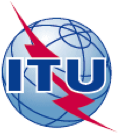
Primary tabs
How do I use this methodology? Ask for support!
 |
ITU-T L.1420 - Recommendation ITU-T L.1420: Methodology for energy consumption and greenhouse gas emissions impact assessment of information and communication technologies in organisations | |
|---|---|---|
| Name of Initiative/Methodology |
Recommendation ITU-T L.1420: Methodology for energy consumption and greenhouse gas emissions impact assessment of information and communication technologies in organisations |
|
| Link to the latest published version |
L.1420 (02/2012): Version 1.0 |
|
|
Developed by |
The International Telecommunication Union (ITU) | |
| History and Status |
o Approved in February 2012 o Publicly available and used |
|
| Involved companies / parties |
o The Study Group 5 of ITU-T is responsible for studying ICT environmental aspects of electromagnetic phenomena and climate change. o The SG5 includes Huawei, Hitachi, Telecom Italia, Orange, Littelfuse, Ericsson, Epcos AG, the JRC, TU Budapest, Aalto University, ETRI, NTT |
|
| Scope |
Organisation env. accounting
|
Product env. assessment
|
|
|
|
|
| System(s) covered by the methodology |
o ICT activities in non-ICT organisations o ICT organisations |
|
| Goals |
o Identifying energy consumption and GHG impacts of the organisation o Providing information to decisions-makers in organisations o Selecting relevant indicators for monitoring of environmental performance o Understanding improvements in GHG emissions over time o Assessing first and second order effects defined in ITU-T L.1410 emerging from the use of ICT in non-ICT organisations. |
|
| Generic features |
o GHG offset is not taken into account. o For ICT organisations, it can be used as a supplement to ISO 14064-1 and GHG Protocol standards. Scope 1 and Scope 2 GHG emissions shall be included. GHG emissions in scope 3 should also be included. For scope 3 GHG emissions, a reference table indicating the reporting structure and scope 3 sources is given in Appendix I. o The general steps include:
o An uncertainty assessment for GHG emissions shall be performed in accordance with clause 5.4 of ISO 14064-1 (ICT organisations) o The result needs to be aggregated to an organisational level and on an annual basis. |
|
| ICT-specific features |
o Assessing GHG impact and energy consumption of ICT in organisations, the following aspects shall be addressed in accordance with the considered scopes:
o For scope 3 GHG emissions, impact from all life cycle stages except the use stage should be divided by the operational life time to get the yearly impacts. o Cut-off principles described in ITU-T L.1410 are applicable to scope 3 categories. |
|
| Examples of implementation / experience feedback | ||
| Interaction with other methodologies |
o [ITU-T L.1400] Overview and general principles of methodologies for assessing the environmental impact of information and communication technologies o [ITU-T L.1410] Methodology for environmental impact assessment of information and communication technology goods, networks and services o [ISO 14064-1] Greenhouse gases - Part 1: Specification with guidance at the organisation level for quantification and reporting of greenhouse gas emissions and removals o [PAS 2050] Specification for the assessment of the life cycle greenhouse gas emissions of goods and services o [GHG Protocol] A Corporate Accounting and Reporting Standard |
|
How do I use this methodology? Ask for support!



 © 2018 ICTFOOTPRINT.eu – ICTFOOTPRINT.eu has received funding from the European Commission’s Horizon 2020 research and innovation programme under the Grant Agreement no 690911. The content of this website does not represent the opinion of the European Commission, and the European Commission is not responsible for any use that might be made of such content.
© 2018 ICTFOOTPRINT.eu – ICTFOOTPRINT.eu has received funding from the European Commission’s Horizon 2020 research and innovation programme under the Grant Agreement no 690911. The content of this website does not represent the opinion of the European Commission, and the European Commission is not responsible for any use that might be made of such content.